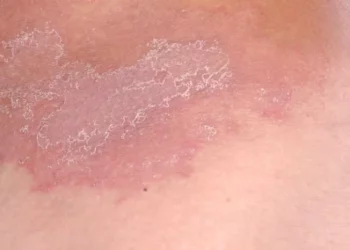Ringworm, a common fungal infection of the skin, affects millions of individuals worldwide. Despite its name, ringworm is not caused by a worm but by a type of fungus known as dermatophytes. This infection can affect various parts of the body, including the scalp (tinea capitis), body (tinea corporis), feet (tinea pedis or athlete’s foot), groin (tinea cruris or jock itch), and nails (tinea unguium). The most effective treatment for ringworm often involves the use of antifungal creams, particularly those available by prescription. This article explores the best prescription antifungal creams for treating ringworm, highlighting their active ingredients, mechanisms of action, and efficacy.
Understanding Ringworm and Its Causes
Ringworm is caused by dermatophytes, a group of fungi that thrive on keratin, a protein found in the skin, hair, and nails. The infection is characterized by a red, itchy, circular rash with clearer skin in the middle, giving it a ring-like appearance. It can be transmitted through direct contact with an infected person or animal, as well as through contaminated objects like towels, clothing, and surfaces.
The symptoms of ringworm can vary depending on the affected area but commonly include:
- Red, scaly patches or rings on the skin
- Itching or burning sensation
- Cracking, splitting, or peeling skin
- Hair loss in the affected area (for scalp infections)
- The Role of Antifungal Creams in Treating Ringworm
Antifungal creams are a primary treatment option for ringworm. They work by inhibiting the growth and spread of the fungus, ultimately leading to the eradication of the infection. These creams are typically applied directly to the affected area, allowing the active ingredients to penetrate the skin and reach the site of infection.
Prescription antifungal creams are often more potent and effective than over-the-counter options. They contain active ingredients that are specifically formulated to target the fungi causing the infection. Here, we will discuss some of the best prescription antifungal creams for ringworm, their active ingredients, and their mechanisms of action.
Clotrimazole
Clotrimazole is a widely used antifungal medication that belongs to the azole class. It works by inhibiting the synthesis of ergosterol, a critical component of fungal cell membranes. Without ergosterol, the fungal cells become permeable and eventually die.
1. Mechanism of Action: Clotrimazole disrupts the production of ergosterol by inhibiting the enzyme lanosterol 14-α-demethylase. This disruption leads to an accumulation of toxic sterols in the fungal cell membrane, increasing membrane permeability and resulting in cell death.
2. Efficacy: Clotrimazole is effective against a broad range of dermatophytes, including Trichophyton, Microsporum, and Epidermophyton species. It is typically applied twice daily to the affected area for 2-4 weeks, depending on the severity and location of the infection.
3. Side Effects: Common side effects of clotrimazole include mild skin irritation, burning, and redness at the application site. These side effects are usually temporary and subside with continued use.
Ketoconazole
Ketoconazole is another azole antifungal agent that is effective in treating various fungal infections, including ringworm. Like clotrimazole, it inhibits ergosterol synthesis, compromising the integrity of the fungal cell membrane.
1. Mechanism of Action: Ketoconazole inhibits the enzyme lanosterol 14-α-demethylase, preventing the conversion of lanosterol to ergosterol. This inhibition leads to a buildup of toxic sterols and increased cell membrane permeability, ultimately killing the fungus.
2. Efficacy: Ketoconazole is highly effective against dermatophytes and is often used when other antifungal treatments have failed. It is typically applied once or twice daily for 2-4 weeks, depending on the location and severity of the infection.
3. Side Effects: Common side effects include skin irritation, itching, and a burning sensation at the application site. In rare cases, it can cause severe allergic reactions.
Terbinafine
Terbinafine is an allylamine antifungal that is particularly effective against dermatophytes. It works by inhibiting the enzyme squalene epoxidase, leading to a deficiency in ergosterol and an accumulation of toxic squalene within the fungal cell.
1. Mechanism of Action: Terbinafine inhibits squalene epoxidase, a key enzyme in the ergosterol biosynthesis pathway. This inhibition results in a toxic buildup of squalene and a deficiency of ergosterol, causing increased cell membrane permeability and fungal cell death.
2. Efficacy: Terbinafine is considered one of the most effective treatments for dermatophyte infections, often showing faster and more complete resolution of symptoms compared to other antifungals. It is typically applied once or twice daily for 1-4 weeks, depending on the severity of the infection.
3. Side Effects: Common side effects include skin irritation, itching, and redness. Terbinafine is generally well-tolerated, but rare side effects can include allergic reactions and severe skin reactions.
SEE ALSO: How Long is Ringworm Contagious in Kittens?
Miconazole
Miconazole is another azole antifungal that is effective against a variety of fungal infections, including ringworm. It works by inhibiting ergosterol synthesis, similar to other azoles.
1. Mechanism of Action: Miconazole inhibits the enzyme lanosterol 14-α-demethylase, leading to a disruption in ergosterol production. This disruption compromises the fungal cell membrane, causing increased permeability and cell death.
2. Efficacy: Miconazole is effective against dermatophytes, yeasts, and other fungi. It is typically applied twice daily for 2-4 weeks, depending on the severity and location of the infection.
3. Side Effects: Common side effects include skin irritation, burning, and redness at the application site. In rare cases, it can cause severe allergic reactions.
Econazole
Econazole is an imidazole antifungal that is effective in treating dermatophyte infections. It works by inhibiting ergosterol synthesis and disrupting fungal cell membranes.
1. Mechanism of Action: Econazole inhibits lanosterol 14-α-demethylase, preventing the conversion of lanosterol to ergosterol. This inhibition leads to increased cell membrane permeability and fungal cell death.
2. Efficacy: Econazole is effective against a broad spectrum of fungi, including dermatophytes, yeasts, and molds. It is typically applied once or twice daily for 2-4 weeks, depending on the severity and location of the infection.
3. Side Effects: Common side effects include skin irritation, itching, and burning at the application site. Econazole is generally well-tolerated, but rare side effects can include severe allergic reactions.
Naftifine
Naftifine is an allylamine antifungal that is particularly effective against dermatophytes. It works by inhibiting the enzyme squalene epoxidase, similar to terbinafine.
1. Mechanism of Action: Naftifine inhibits squalene epoxidase, leading to a buildup of toxic squalene and a deficiency of ergosterol. This disruption compromises the fungal cell membrane, causing cell death.
2. Efficacy: Naftifine is effective against dermatophytes and is often used for treating tinea infections, including tinea corporis and tinea cruris. It is typically applied once daily for 2-4 weeks.
3. Side Effects: Common side effects include skin irritation, itching, and redness at the application site. Naftifine is generally well-tolerated, but rare side effects can include severe allergic reactions.
Choosing the Right Antifungal Cream
The choice of antifungal cream for treating ringworm depends on several factors, including the severity and location of the infection, patient preference, and any previous treatments. Here are some considerations to help guide the selection:
1. Severity of Infection: For mild to moderate infections, clotrimazole, miconazole, or econazole may be sufficient. For more severe or persistent infections, stronger antifungals like ketoconazole or terbinafine may be necessary.
2. Location of Infection: Certain antifungal creams are more suitable for specific areas of the body. For example, terbinafine is often preferred for athlete’s foot due to its efficacy and shorter treatment duration.
3. Patient Preference: Some patients may prefer creams with certain textures or fragrances. Additionally, the frequency of application can influence patient adherence to the treatment regimen.
4. Previous Treatments: If a patient has previously used an antifungal cream without success, switching to a different active ingredient may improve outcomes.
Conclusion
Ringworm is a common and contagious fungal infection that can affect various parts of the body. Prescription antifungal creams are a highly effective treatment option, offering targeted therapy to eradicate the infection. Clotrimazole, ketoconazole, terbinafine, miconazole, econazole, and naftifine are among the best prescription antifungal creams available, each with its own unique mechanism of action and efficacy profile.
When choosing an antifungal cream, it is essential to consider the severity and location of the infection, patient preferences, and any previous treatments. Consulting with a healthcare professional can help ensure the most appropriate and effective treatment is selected, leading to faster resolution of symptoms and prevention of recurrence.
By understanding the various options and their specific benefits, patients and healthcare providers can work together to achieve the best possible outcomes in the treatment of ringworm.
Related Topics:

























